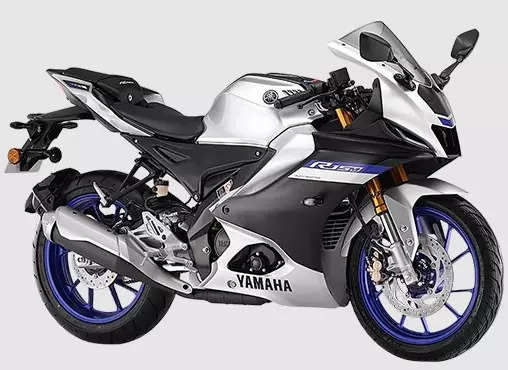
New Delhi: Yamaha Motor India is carrying out modifications at its Chennai facility so that it is in sync with the overall global vision of making it a hub for premium motorcycles and scooters.
The Japanese automaker made this revelation during a recent Q&A session in Japan which focused exclusively on its India operations. According to the management, when the Chennai plant was first established, the general idea was to mass produce low-priced models.
This was also the time when Yamaha was looking at Africa as a key destination for such competitively priced bikes but this has now changed to shipping out premium two-wheelers from Chennai to advanced countries.
“We viewed its (Chennai) strength to be the ability to manufacture small-volume, low-priced models at high speed. However, with the change to our premium model strategy, it has now become necessary to manufacture medium-volume, premium-priced models,” it said during this Q&A session that has been uploaded on the website.
Changing floor layouts
Yamaha is hence, modifying the Chennai facility to align with its current strategy by changing floor layouts etc. Its Surajpur plant in northern India has land constraints that make physical expansion difficult, “so we are aiming to raise productivity in order to up production volumes”.
Chennai, on the other hand, will be expanded as necessary to increase production. According to Yamaha, it is possible to accommodate the production of premium models in this facility and “we are considering this move”.
It is only the FZ series that will be made in both facilities since it was the “most produced line” of models when Chennai first started operations. “The FZ series comprises our highest production volume, so manufacturing it at both the Chennai and Surajpur factories is how we have achieved a balance in our factory operations,” said the management.
The bigger story behind this realignment is more to do with the increasingly important role of India as a global hub. Yamaha only has a few factories worldwide that make high value-added motorcycles with small to midrange engine displacements.
India’s global role
“Manufacturing in Japan is not cost-effective and there is little demand for such motorcycles in ASEAN markets. As India’s own emissions regulations are strict, it is possible to manufacture premium models there with domestic market specifications and still export them to Europe in that same spec. This could become the raison d’être of our Indian base,” Yamaha has stated.
Interestingly, the company is also working on changing the mindset regarding quality “among our local Indian personnel”. Specific initiatives include sending these employees to Japan and providing them with opportunities to tour production sites and training on quality matters.
Beyond this, Yamaha is having engineers and technicians from Indonesia — a country already manufacturing models for global market — visit its Indian facilities and share their expertise. “In addition, for processes where quality is particularly important, we are moving automation forward at the same time to prevent human error,” the management has added.
The company is focusing on its cost-cutting initiatives in India since this is an imperative in exports with efforts being made to reduce the number of imported parts. “Even for parts that initially began production at our facilities in Indonesia, the ones we can reduce the cost of are manufactured in-house in India,” it has pointed out.
Local sourcing of parts
Procuring high-functionality parts in India is difficult and the company often has to source these through imports. This explains why the import ratio of parts rises during the initial launch of new high-performance models, “but we are continuing our efforts to switch over to more domestic procurement”.
India has already set the ball rolling in Yamaha’s renewed export strategy for advanced markets where its competitiveness in costs and quality is there for all to see. In France, which accounts for a large volume of its scooter sales in Europe, the air-cooled 125cc Ray ZR made in India is sold at a lower retail price than the one produced in Vietnam. “We focus on quality and are making efforts to close the Indonesian base quality (with India),” Yamaha has said in the Q&A session.
The Japanese automaker is of the view that the Indian motorcycle market will continue growing even after 2030. As the disposable income held by its current customer base of younger users rises, the company plans to develop models with higher added value.
At present, nearly 85% of its sales are to youngsters in the 18-29 age group and Yamaha estimates its share in premium segment models of 150cc plus to be around 30%. Of these buyers, 60% finance their purchase while 40% buy with cash. “With student customers, their parents may also help fund the purchase,” the company has said.
Gen Z remains the focus
Whilst on the subject, it has also been estimated that 25 million people join India’s Gen Z every year of which 1.6 million are likely to buy Yamaha’s premium models. The percentage of women riders for its products is around 10% where they are more inclined towards scooters and the number “drops into single-digit percentages when it comes to sport bikes”.
While scooters are an important part of its India product portfolio, Yamaha clearly believes that motorcycles will have the “largest absolute percentage growth” going forward and is accordingly “pushing the roll out of premium motorcycles for upper-middle-class youth”.
In ASEAN markets such as Indonesia and Thailand, scooters are Yamaha’s main products while high value-added scooters are the primary premium models. The Indian market, on the other hand, is dominated by motorcycles and “we have strengths in our lineup with premium motorcycle models”.
The semiconductor supply shortage during COVID pandemic had a significant impact on production of premium models and the company was unable to supply enough products as a result. However, the issue has been resolved now and it aims to increase its market share in 2024.
New approaches
The focus will be on young buyers between 18 and 25 years of age. “Also, to ensure we do not lose customers we have secured, we will adopt approaches like introducing new models aimed at trade-ins or stepping up. The plan is to grow our business together with the Gen Z customers we secure,” the management has reiterated.
By the end of the day, Yamaha is only too aware that its market share in India is small, but “we have a good brand image” with its products sought after by young urban residents. “We have also differentiated ourselves from our competitors by unifying our sales outlets as Blue Square luxury shops using blue as their main colour,” it has pointed out.
Furthermore, “we are not spreading our advertising out across each generation, but instead focusing on media consumed by the younger generations that comprise our main customer segment, thereby efficiently promoting sales”.
Marketing package
In this way, Yamaha believes that its success is thanks to thorough implementation of a coherent marketing package not only for the product but also for communication, sales channels and customer engagement.
It has also added in the Q&A session that while there are some competing models in the premium model segment, there are no manufacturers in India which are in direct competition “with us targeting urban upper-middle class Gen Z customer base”.
In Europe, market demands fall into well-established displacement segments and there is a need to compete for performance in the 600cc and 1000cc categories. But in the Indian market, there are disparities in market demand when it comes to displacement and there are no models Yamaha uses as benchmarks in terms of performance. “We believe it is important to sharpen our concepts and take them forward,” the management has clearly stated.















